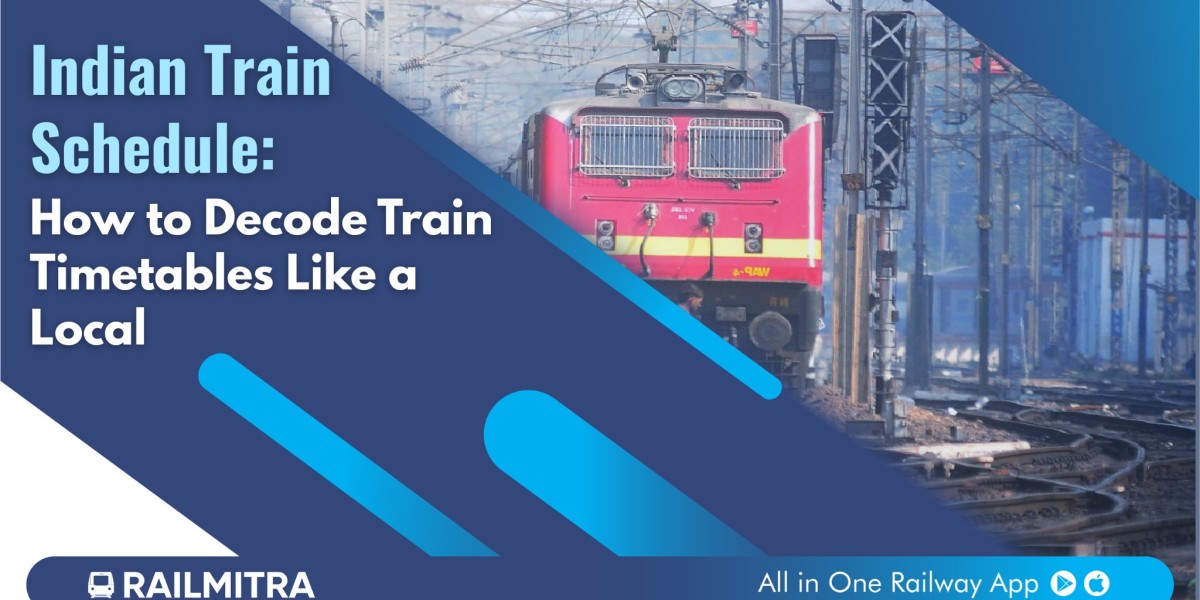For many travellers, Indian train timetables can feel like a cryptic puzzle — codes, multiple timings, and unfamiliar station names. But for daily commuters and seasoned passengers, reading a train timetable is second nature. So how do they do it?
With just a bit of guidance (and the help of RailMitra), you too can decode train timetables like a local. Once you master it, you’ll be able to plan better, avoid delays, and even discover smarter routes.
Here’s how you can become a pro at reading Indian train schedules!
Train Schedule: The Key to Efficient Travel
Your train journey begins with checking the train schedule. It gives you all the crucial details — train numbers, running days, halt stations, timings, and platform info. But to truly benefit, you need to understand how to read and interpret each section.
Step-by-Step Guide to Decoding Train Timetables
1. Understand Train Numbers and Types
Every train has a unique 5-digit number. The first digit often indicates the type of train:
0 or 1: Special trains
1 or 2: Long-distance express/superfast
5 or 6: Passenger/MEMU trains
Pro Tip: Locals use the train number to search faster on RailMitra — especially during rush hours.
2. Know the Station Codes
In timetables, stations are often written with 2-4 letter codes (e.g., NDLS for New Delhi, HWH for Howrah). You can easily find full names on RailMitra — just type the code or station name.
3. Learn the Timing Format
Indian Railways runs on a 24-hour clock. For example:
05:30 = 5:30 AM
17:45 = 5:45 PM
Locals use RailMitra to compare train timing and spot the most convenient departure slot.
4. Check the Arrival and Departure Columns
Each station in the timetable shows:
Arrival Time: When the train reaches the station
Departure Time: When it leaves
If both are the same, the train halts for less than 2 minutes.
5. Read the Running Days
The timetable shows which days the train operates (e.g., M T W T F S S). If a train runs only on certain days, it’ll be marked accordingly. Always double-check this before planning your trip.
6. Track Delays in Real Time
Even if you understand the printed timetable, live delays can change everything. That’s why smart locals use RailMitra to track real-time status and platform updates — especially helpful at crowded stations.
7. Seat Availability & NTES Accuracy
Once you decode your route, check seat availability in train and live updates powered by NTES (National Train Enquiry System) — all available on RailMitra.
Why RailMitra is the Local’s Choice
Real-time train schedule updates
Station code and train number search
Seat availability checker
Live delay and platform alerts
NTES-powered accuracy
FAQs
Q1. Can RailMitra help identify station codes?
Yes, just start typing the station name and suggestions will appear.
Q2. How do I know if a train runs daily?
RailMitra shows the running days clearly in the train details section.
Q3. Is the train timing live or fixed?
You’ll see both scheduled and live timings on RailMitra.
Q4. Does RailMitra help with platform numbers?
Yes, expected platform info is available for many major stations.
Final Thoughts
You don’t need to be a railway veteran to decode a train timetable. With this guide and RailMitra by your side, you’ll travel like a local — smarter, quicker, and with zero confusion. Start planning your journey today and let every trip be smooth from platform to destination.






